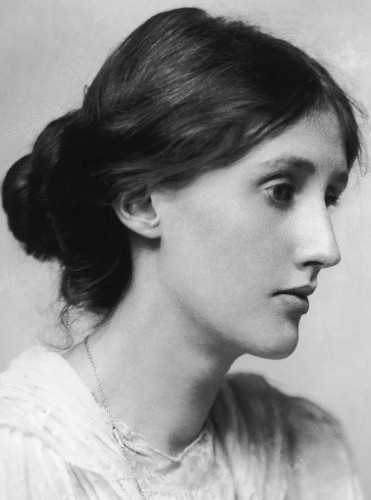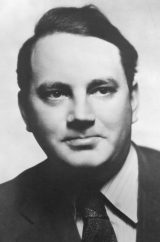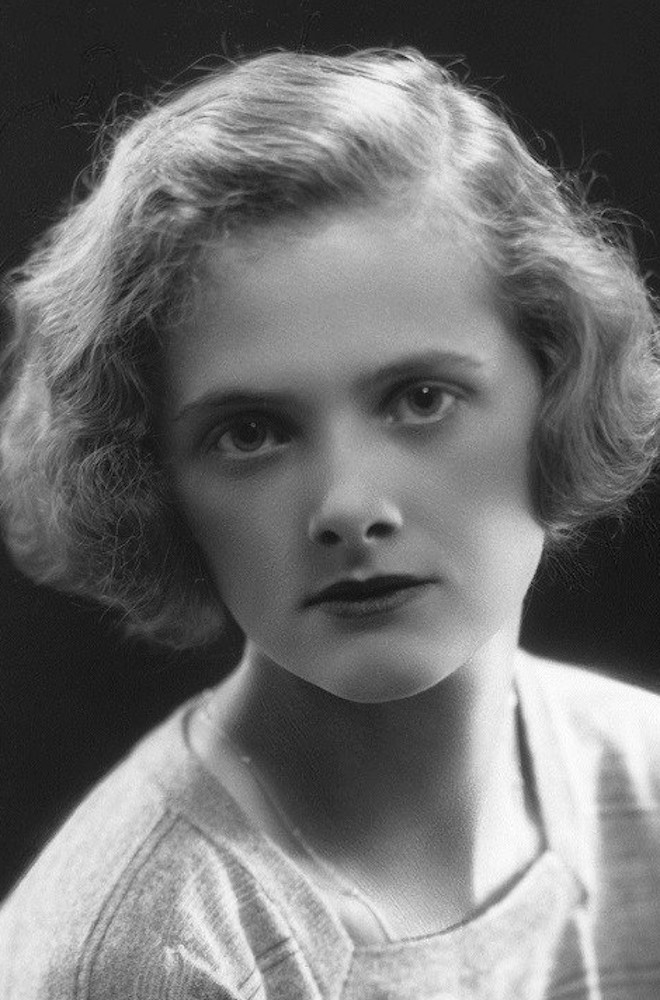 Bio
Bio
Woolf, born as Adeline Virginia Stephen, was born on the 25th of January, in the year of 1882, in South Kensington, London, England. She was a beloved English authoress, looked upon as one of the key modernist writers of the 20th century. She is regarded as the pioneer for the usage of streams of consciousness as a narrative device.
Her father was Leslie Stephen, an author, an essayist, a mountaineer, a biographer, and historian, and her mother was Julia Stephen, maiden name Jackson. The mother of Virginia, Julia, was born in Calcutta, Bengal, British India.
Best Virginia Woolf Books
| Photo | Title | Rating | Length | Buy |
|---|---|---|---|---|

|
A Room Of One's Own | 9.96/10 | 72 Pages | Check Price On Amazon |

|
Mrs. Dalloway | 9.48/10 | 108 Pages | Check Price On Amazon |

|
To the Lighthouse | 9.16/10 | 176 Pages | Check Price On Amazon |

|
Orlando | 9.42/10 | 284 Pages | Check Price On Amazon |

|
The Waves | 9.86/10 | 174 Pages | Check Price On Amazon |
Author’s Influence
Woolf, throughout her great career, gained the position of being one of the most important subjects of the feminist movement of the 1970s, with her works being beloved for their empowering and inspiring feminism. Her writing has been translated into more than four dozen different languages, with a whole body of literature reserved just for her life and work. With that said, let’s now take a look at the best Virginia Woolf books.
A Room of One’s Own
 Expanded Into a Book
Expanded Into a Book
A Room of One’s Own is one of the most notable and most-read works. One could even venture to say that this is atop the most popular Virginia Woolf books. A Room of One’s Own was published in the year of 1929, spanning little above one-hundred pages.
A Room of One’s Own is an extended essay written by Woolf. A Room of One’s Own is based upon several various lectures that she delivered to the Girton College and Newnham College, two women’s colleges at Cambridge University, a year before the book’s publishing. Her work right here is one of her most important, most inspiring, and most moving.
Blending Fiction and Non-Fiction
The manuscript for the lecture series bore the title of Women and Fiction and while the book at hand does utilize a fictional narrator and a plot that looks upon women as both characters in fiction and as authors of fiction, so A Room of One’s Own is most often considered a non-fiction work.
The writing here is very much feminist, in nature, though not quite in line with the feminist zeitgeist of today. Woolf’s writing asserts that there is an argument for the place of women in fiction, an area that had been as of yet dominated by men. Among the top Virginia Woolf books and the Virginia Woolf’s best-selling books, as well.
Mrs. Dalloway

 Life Portrait
Life Portrait
Mrs. Dalloway is without a shadow of a doubt one of the best-rated Virginia Woolf books of all time. Along with the previous entry, Mrs. Dalloway is also one of the most read books by the terrific authoress. Mrs. Dalloway was published in the year of 1925 considered and accepted as being the greatest novel from Virginia Woolf books list.
Dalloway is an uncanny, genuine, sincere, and true to life portrait of a day in the life of a certain woman, namely Mrs. Clarissa Dalloway. When Mrs. Dalloway makes our acquaintance for the first time, we see as she is engrossed in the preparations for a party even though, in her mind, she is more than a hostess for parties.
Reconciliation
As Mrs. Dalloway makes ready her home, memories from times well past begin to inundate in her mind, so much so that these reminiscences take hold of her. As the memories from so long ago mingle with the reality of the now, Mrs. Dalloway tries to reconcile how she has found herself where she currently is.
Dithering between what she once was, what she currently is, and what she, like all men and women, will inevitably be.
To the Lighthouse

 Picture of a Family
Picture of a Family
To the Lighthouse is, like many of Woolf’s books, one of her greatest works of all time. To the Lighthouse was published in the year of 1927, spanning merely a hair over two-hundred pages, in total. To the Lighthouse is a family holiday portrait before and following the First World War, to put it succinctly. Mrs. Ramsay is the crux of the world of To the Lighthouse.
Mrs. Ramsay is a mother to eight children, a wife, and a hostess for guests that will be arriving at the holiday home in the Hebrides. The usage of the stream of consciousness in this novel is perhaps the most mature of Woolf’s books, as she changes between the perspectives seamlessly throughout.
Time Passes
The novel is divided into three different sections. The first is The Window, the second is Time Passes, and the final one is The Lighthouse. In the first section, we see as the Ramsays are joined by their colleagues and friends at their holiday house, with many tensions present.
The second section takes place ten years later, with the home now empty, for reasons which we aren’t at liberty to discuss, and the final section sees a return to the holiday home, in a world quite different from the one a decade ago. No surprise why this is one of the best-selling Woolf books.
Orlando

 Farce and Irony
Farce and Irony
Orlando is yet another standalone novel from Woolf. Like many of her works, this stands as one of Virginia Woolf’s best books. Orlando was published in the year of 1928, with a page count of about two hundred and seventy pages. The writing present in the book Orlando is one of her most intimate, most touching, and most loving.
It is often regarded as being a letter of love sent not to fiction or the reader, but the broadest scope of all literature. Orlando, in the novel, is a young nobleman during the period of Queen Elizabeth’s England. The young man is awaiting a visit from the great Queen, so to pass the time, in a sense, he looks upon certain memories.
Becoming a Woman
The memory, at hand, that he concerns himself with is of the first love he ever experienced, which was during the reign of James I. Throughout the novel, we see Orlando reminiscing on many a thing, but during the middle portion, when Orlando is an ambassador in Constantinople, he wakens one day to find himself being a woman. This is where the farcical and ironic nature of the novel takes full control, with Orlando soon becoming a wife and a mother.
The Waves

 Six Characters
Six Characters
One of the works of Woolf that is oftentimes considered as being Virginia Woolf’s best book is undoubtedly The Waves. The Waves is a novel that was published in the year of 1931, with a page count of nearly three-hundred.
The Waves is a tale situated on the English coast, with the sea’s vivid, powerful, and moving backdrop visible. The Waves has a total of six characters that we meet, three of which are women, the other three being, logically, men. All six of these characters have a few things in common, but the most important one, it seems, is dealing with the quite early death of their adored friend, Percival.
Grief Inside
Woolf doesn’t have her characters fall into paroxysms of grief, of pain, of fury, or suffering, but allows us, through her trademark stream of consciousness, to see the pain, the grief, the fury, and the suffering they feel inside by means of internal monologues and soliloquies.
As the story moves on, one goes the feeling that there is more to it, which there always is in Woolf’s book. This is a novel well ahead of its time, one that is deserving of the title of the best Woolf book.
The Voyage Out

 Debut Novel
Debut Novel
The Voyage Out is the first novel from Woolf which ever saw the light of day. For a debut work, it stands on its own two proverbial feet in the most assured way possible. The Voyage Out was published in the year of 1915. It is one of, if not the best Virginia Woolf novel.
Setting Sail
Utilizing, for the first time, the stream of consciousness which would become a trademark part of Woolf’s writing in the future, it is quite hard to pinpoint the narrator. The events happen around twenty-four-year-old Rachel Vinrace, with her travel from London to South America by boat.
The tale has its beginning with Rachel, her dad Willoughby, his friend, and aunt Helen and uncle Ridley, as they all prepare to set sail. We meet the characters with conversations that show the complexity not just of the relationships we have, but the complexity of Woolf’s writing.
Love on Shore
Worth noting is that Mrs. Clarissa Dalloway has an appearance in this novel, though the work that made her character and name famous was published years later, and here she is of no special importance.
As the tale goes on, we see Rachel and Helen as they become closer to each other, with Rachel getting into a relationship with a certain Terence not long after. The story is wondrous and we cannot recommend it enough. One of the best books by Virginia Woolf, in our opinion.
Night and Day

 Tug of War
Tug of War
Night and Day is yet another important Woolf novel. If we were to put forth our list of the Virginia Woolf’s books ranked, while we’d surely tend to have all of them among the top, Night and Day would hold a place dear to our hearts. Night and Day was published in the year of 1919 and it’s one of the longest works of the authoress.
The main character of the novel Night and Day is none other than Katharine Hilbery. Katharine Hilbery is without a doubt a very beautiful, attractive, and elegant woman, living a life of many privileges, but there is a certain dread inside of her, one focused on the lack of certainty that the future holds. Katharine is quite attracted to the fervent Ralph Denham, though the poet William Rodney is supposed to become her fiancée.
Making the Choice
While Katharine’s struggle continues, it is the life of Mary Datchet, a women’s rights activist, and the life of Margaret, the mother of Katharine, that begin to weigh upon the decision-making of Katharine, so much so that she can feel the consequences of both choices.
Margaret is troubled with the need to put together the events, memories, and documents of her father into a single biography. One of our favorites of all our Virginia Woolf book reviews.
Jacob’s Room

 Breakthrough Novel
Breakthrough Novel
Yet another of the fantastic Woolf works is Jacob’s Room, a novel that was published in the year of 1922. Jacob’s Room stands as being one of the best Virginia Woolf books of all time, without a doubt.
Jacob’s Room, more so than the Woolf’s books that preceded it, became the first Woolf work that distinguished itself so much that the young authoress gained quite a bit of attention for this particular work. It is a very inventive, creative, and intriguing tale, one of the most original books in the list of Virginia Woolf’s novels. Jacob’s Room follows the eponymous character named Jacob Flanders.
Story of a Lifetime
Jacob Flanders is a young man, one with a very sensible and sensitive side to him. We follow Jacob Flanders and his life’s story, from the earliest period of his childhood, with all of the friends and family members he has, through school and college at Cambridge, with his plentiful affairs in London, his journeys to the brilliance of Greece, and even his death during the First World War.
Jacob’s Room was the tale that firmly settled Woolf’s place in the literary circles not just of that time, but of years and decades to come. One of Woolf’s best novels.
Flush

 Pleasant Read
Pleasant Read
Flush is one of the most underrated works of Woolf, but, to us, it is one of the most fascinating and most intimate works of the authoress. Flush is a book that was published in the year of 1933, with a page count of two-hundred. Of all Woolf’s modern novels, Flush is perhaps the most pleasant to read.
Dog’s Story
Flush is a book that tells the life story of a cocker spaniel with the same name. Flush was owned by the poet Elizabeth Barrett Browning. If one hasn’t caught on yet, then illumination is due: the book at hand is very much biographical, though also fictionalized.
The novel begins with the history of cocker spaniels and their place in aristocratic England. Flush, himself, was a country farm-born cocker spaniel, where he loved to be without rein and free to chase other animals.
Neglected Gift
While recuperating from an ailment, Elizabeth was given Flush. While Flush does try to make the best of what is given to him, it is without doubt that his life was now very much restricted. Even when out and about, Flush was restrained by the leash around his neck.
Elizabeth then meets Robert Browning, whom she falls for, leaving Flush feeling neglected with time. Without going too much into detail, it should be noted that this is a fine tale, one of the most heartfelt of Woolf’s.
Between the Acts
 Final Novel
Final Novel
Between the Acts was the final novel that she ever published, before her untimely death in the year of 1941. It is also one of the most important books on Virginia Woolf’s novels list and one of the most intriguing tales she ever penned.
Celebration
Just before the Great War’s sequel, the story starts in a county home in an undisclosed part of England. It is the annual pageant day when it is to be performed on the house’s grounds. The pageant is viewed as a traditional celebration of the history of England, for which many of the community living nearby are generally in attendance.
The homeowner is Bartholomew Oliver, a widower and a retired Army officer. Bartholomew has a sister, Lucy, who has a certain eccentricity about her, but she is an innocuous person.
Human Relationships
Bartholomew’s son Giles is a man that has a job in London and one that is always ill at ease and irritable. Giles’ wife is Isa, who is staying at the house with her two kids, has slowly become disinterested in Giles, bearing an interest only for the farmer named Haines, though they’ve yet to exchange anything more than a glance.
As the day of the pageant comes, the complex family relationships begin to unravel, with the writing of Woolf lending itself pleasantly to the story. One of the best Virginia Woolf novels.
A Writer’s Diary

 Decade After
Decade After
A Writer’s Diary is one of the best books about Woolf, even though it was written by Woolf. A Writer’s Diary is a book that was published more than a decade following Woolf’s passing away, but it still is one of her most important.
The entries into the diary at hand are ones that are filled with a ardent love for life, with a hunger and an appetite that can’t be matched, an unrestricted, unrestrained passion, and with a powerful urge to absorb all of it. As the lonesome walks in the countryside of Sussex begin, one cannot help but feel the mighty writing present. The descriptive, lyrical nature of the writing is a godsend for this kind of writing.
Pervasive Quality
One understands and feels the unyielding march of time, the transient nature of everything around us, the chaotic intricacy of our emotions, the oddity of memories, of both the ability to recall what was, to live in the what is, and to expect the what shall, along with the monotony of everydayness, all present in the book at hand.
There is much to be said about the brilliance of Woolf, but A Writer’s Diary could just as easily have been one of those novels about Virginia Woolf, and a singularly marvelous one at that.
The Years

 Melancholic
Melancholic
The Years, of all the books written by Woolf, is one of the most nostalgic, most melancholic writings of the absolutely fantastic writer. The Years was published in the year of 1937 and spans nearly four hundred and fifty pages.
Through Thick and Thin
The Years, while Woolf was still alive, was hailed as being one of her most loved and most read works, but that is true even after her death, though many of her other works have stepped into the powerful limelight – and with proper reason –, as well.
The Years tells the tale of the Pargiter family’s three generations. We go through all of the falls, the getting-ups, the anxieties, the delights, glees, and alienations that the family has endured, all while the blissful, unceasing London backdrop moves.
Manners and Survival
The Pargiter children, seeing as they were subject to a routine and typical Victorian-era family upbringing and Victorian-era family relationships, are forced to find where their stand in the world ought to be.
When the need becomes not just to know the manners at a dinner table, but how to survive the air-raid respites and shelters, it becomes clear that everything has sorely and rancorously changed. The Years is a book that we recommend to all readers, not just those intrigued by Woolf, but all those that want to read a brilliant novel.
The Diary of Virginia Woolf Series

 Recommended
Recommended
This is one of the most significant works that one can read on the topic of the great authoress. Of all the books on Virginia Woolf, this is our go-to. The series, itself, is also one of the best Virginia Woolf series.
Significant Periods
All five books of this series are ones that were published decades following the death of Woolf, but they contain some of the most paramount writing and insight into the authoress’ work ever.
The series begins as we meet Woolf, by means of diary entries, when she was still fairly young, only at the beginning of her illustrious career. Then, we move on to a very crucial period during her writing, where the seeds for greatness were sown, for later on to be reaped.
Writing the Great Works
Following on, we see the frame of mind that the authoress had while she was writing some of her greatest works like To the Lighthouse and The Waves, then later on we concern ourselves with the period of her writing The Years, and such.
Three Guineas

 Non-Fiction Novel
Non-Fiction Novel
Three Guineas, a non-fiction work of the brilliant authoress, is oftentimes brought up as a follow-up book to her brilliant A Room of One’s Own. Three Guineas was published in the year of 1938 and spans about three hundred and fifty pages or so.
Question for the Authoress
Three Guineas is an extended essay, structured in the form of a letter responding to a man that asked of Woolf to aid him in the mission to thwart and hinder the coming war, namely asking how it is that war can be stopped and avoided.
The answer and response are centered around a large number of things, firstly being two different letters, one which was a request for money for support of a women’s college and the other a similar request to aid an organization for women entering into certain professions.
Biting Answer
As the answer to the primary question about war and its prevention still looms, Woolf regards the two letters while making her response. The things that Woolf says and writes in response are both subtle while being detailed, featuring a polemic of anti-fascist nature. It is also a polemic against capitalism, patriarchy, and all those forms of control that limit people by some facet or other, be it gender, be it social position, or be it affluence.
Monday or Tuesday

 Intriguing
Intriguing
If one were to put forth Virginia Woolf’s novels in order of, for instance, the greatest to the less great, then Monday or Tuesday could and should never be disregarded in any manner. It is one of her most intriguing writings and it was published in the year of 1921, spanning only one hundred and fifty pages.
Delightful Collection
Woolf, prior to Monday or Tuesday, had published two novels. Monday or Tuesday is, in fact, a collection of shorter stories from the earlier years, which brought forth the opinion about Woolf that she had a vivid imagination and a daintily pleasant authoring style.
With influences like Marcel Proust and James Joyce, and with regards to the theories and writings of Sigmund Freud, Henri Bergson, and William James, the tales at hand are very much beautiful to read.
Wondrous Tales
Many of the stories present in the Monday or Tuesday collection are Kew Gardens, A Society, The String Quartet, Blue & Green, A Haunted House, The Mark on the Wall, An Unwritten Novel, and, of course, the eponymous story Monday or Tuesday. The grand and superb writing of Woolf is always an attraction worth spending time with, but it goes doubly for the book at hand.
There’s More
Picking up The Letters of Woolf, we think, would be a great idea if the author has your fancy.
Alissa Wynn
Alissa is an avid reader, blogger, and wannabe writer. (She's a much better cook than a writer actually). Alissa is married, has one human, one feline, and two canine kids. She always looks a mess and never meets a deadline.





